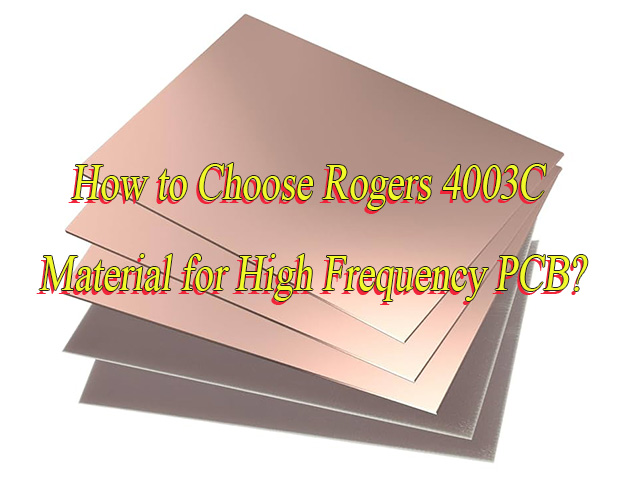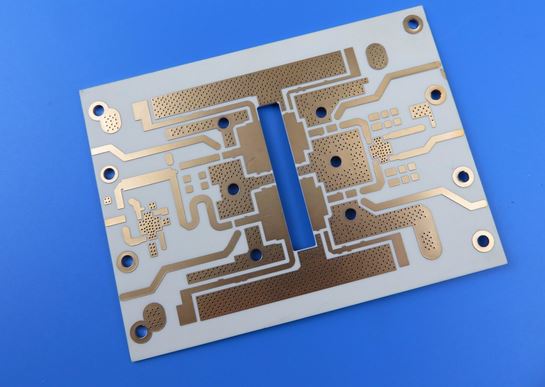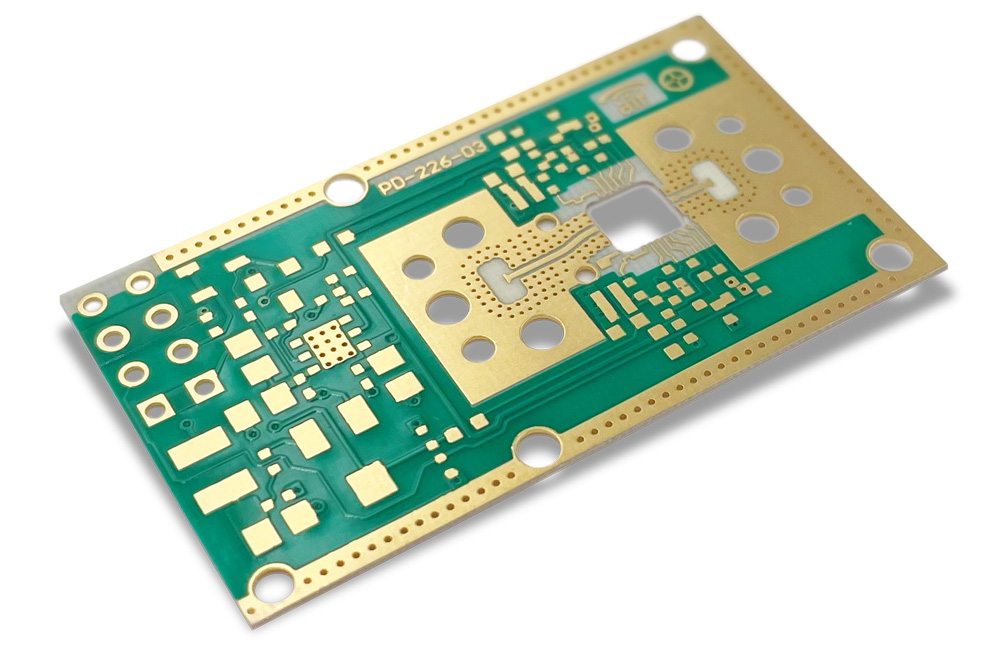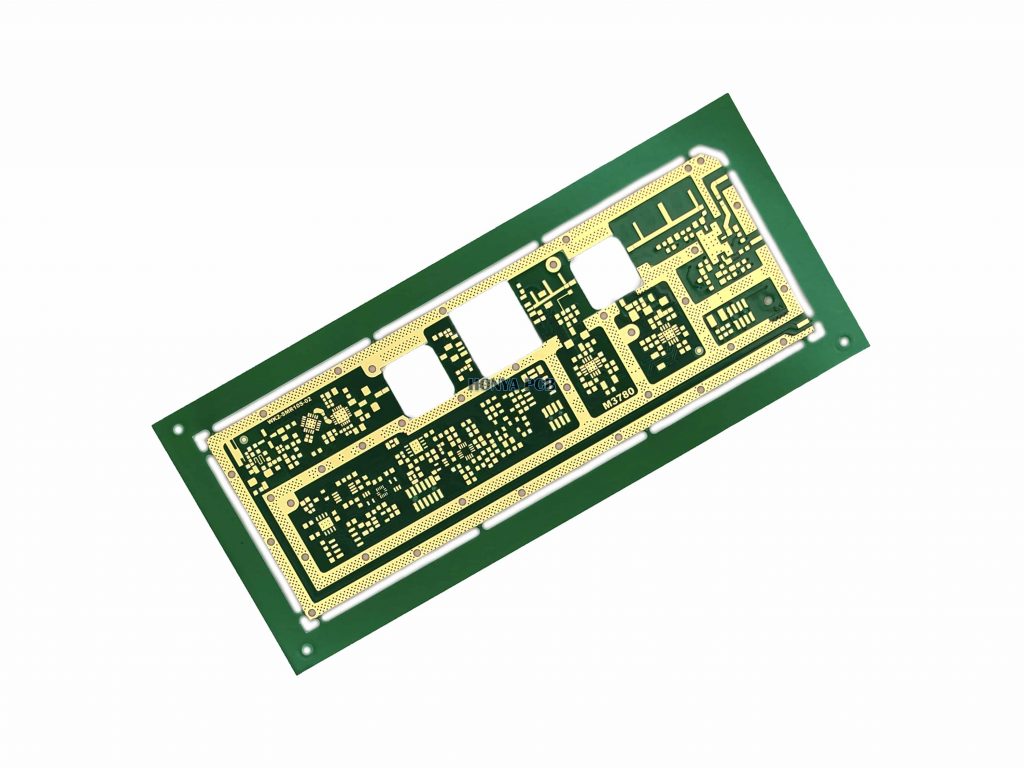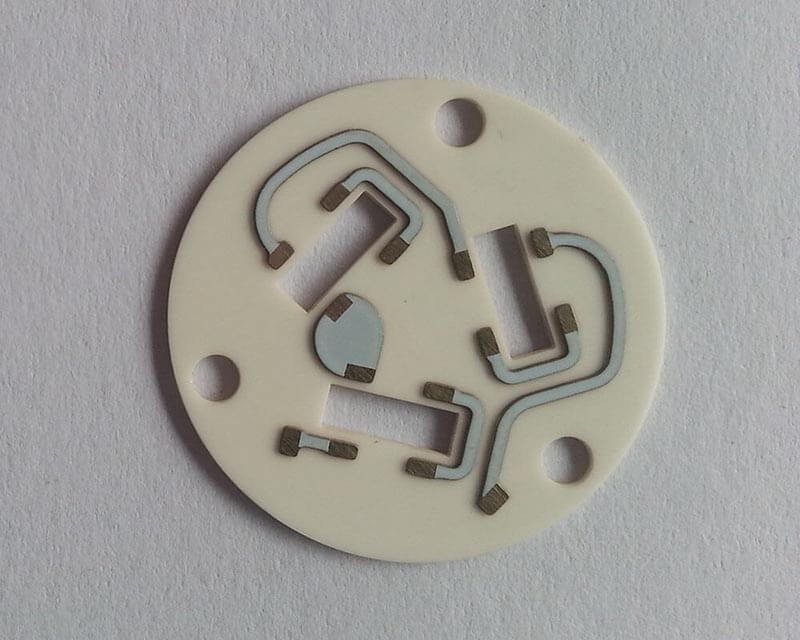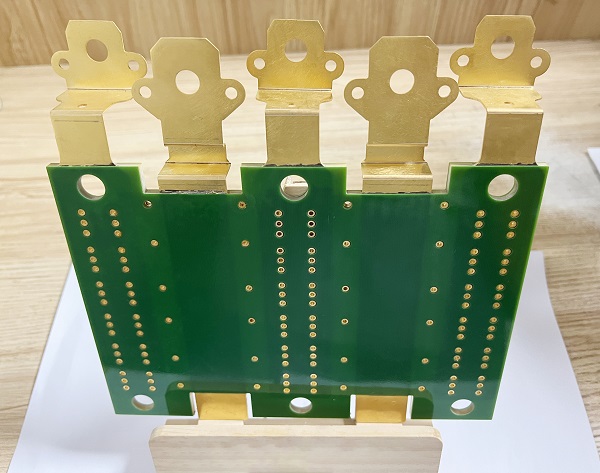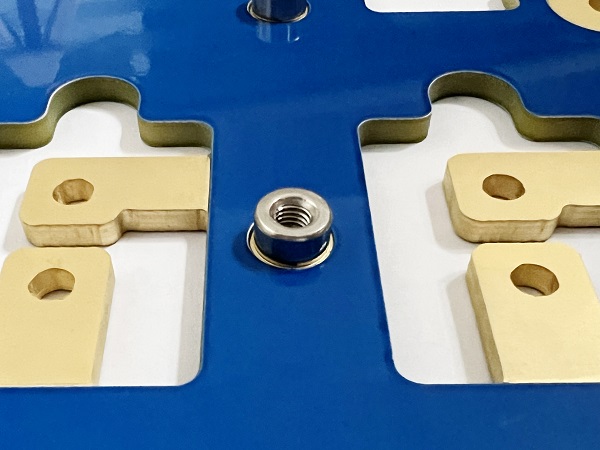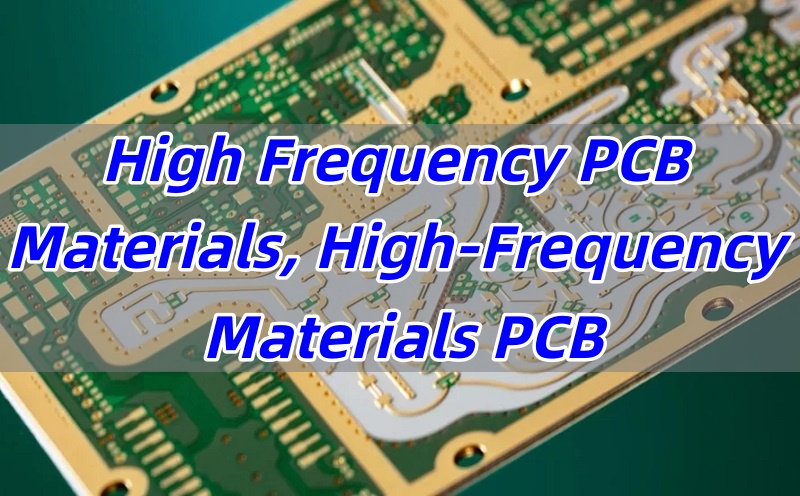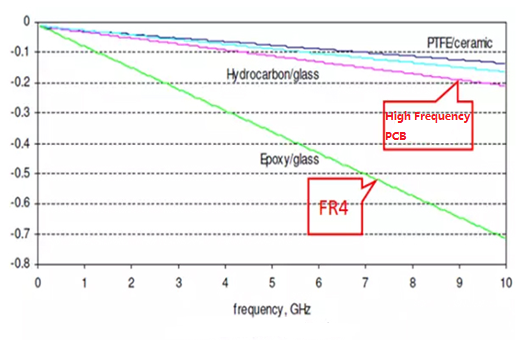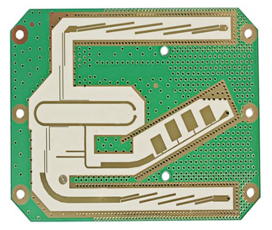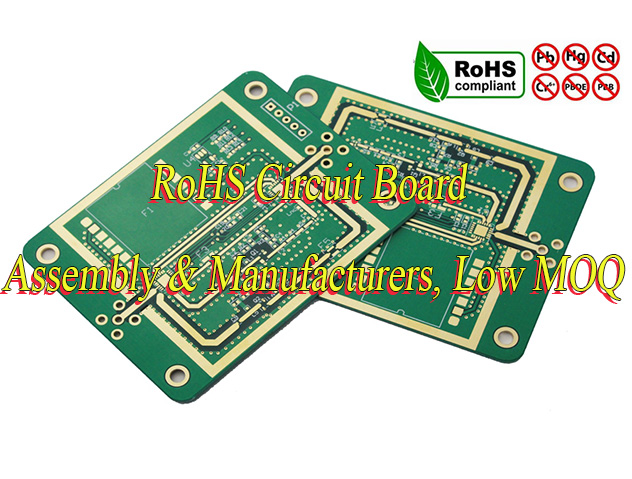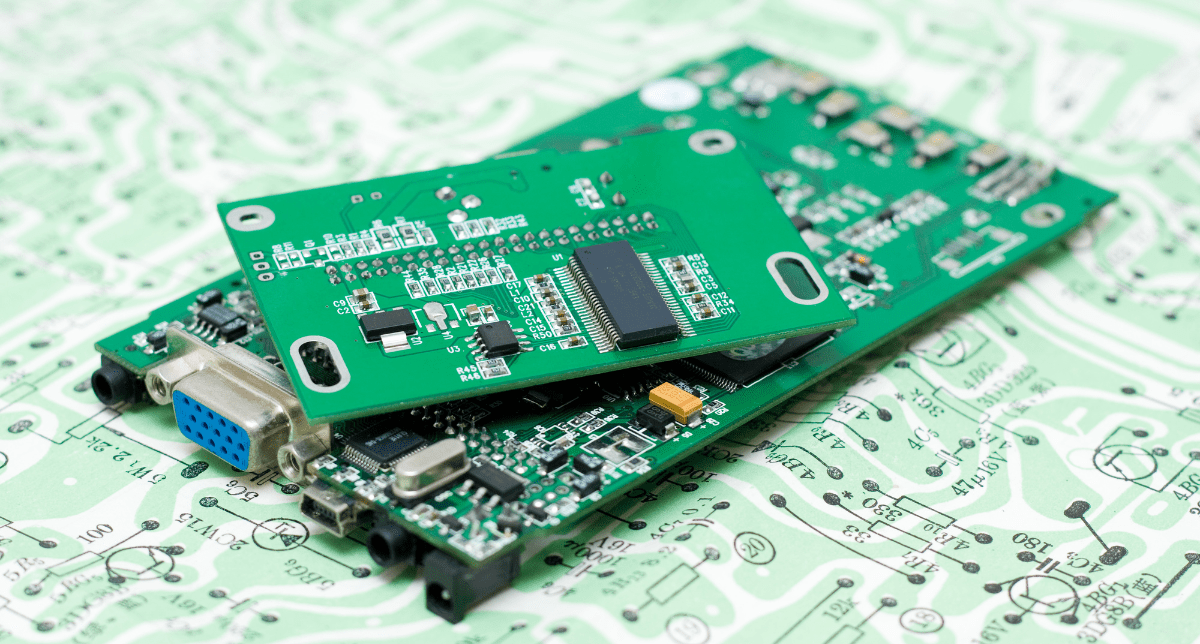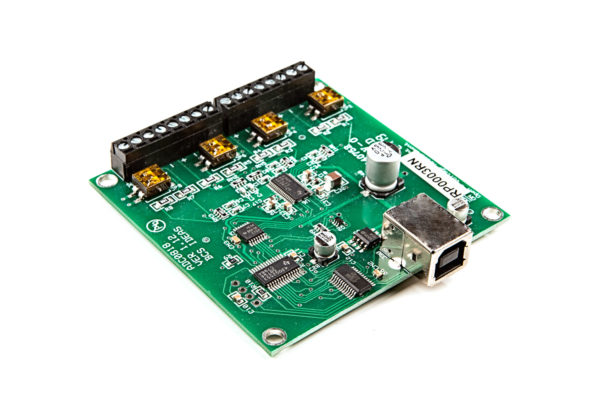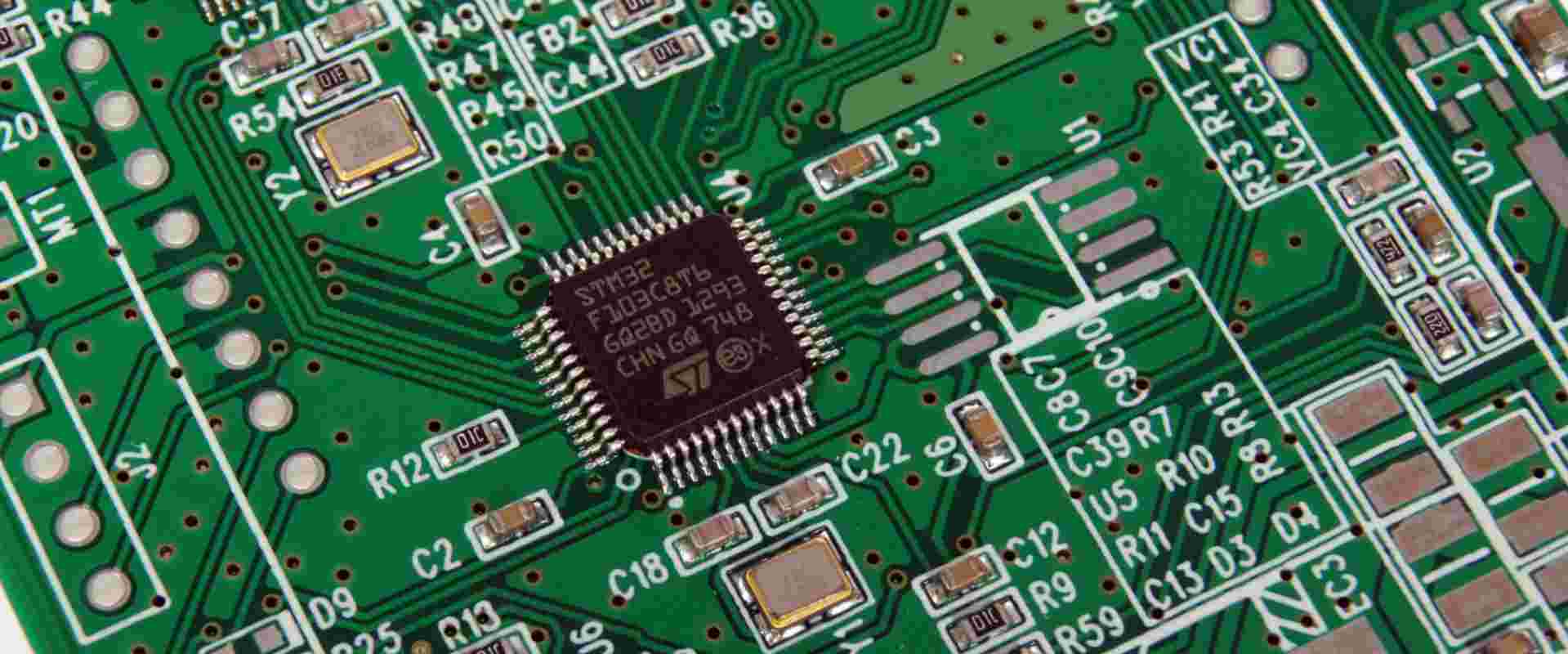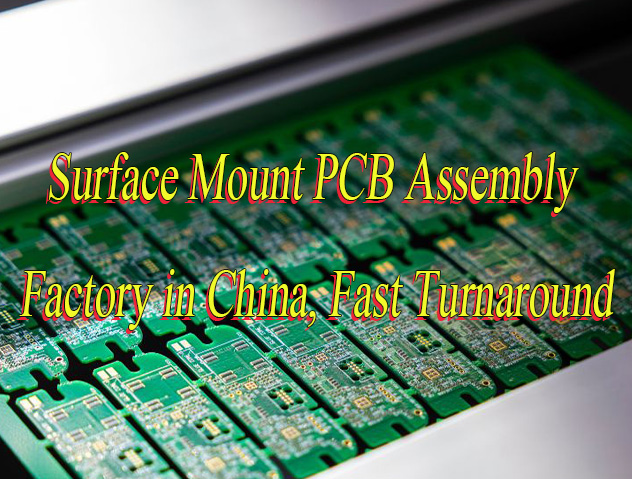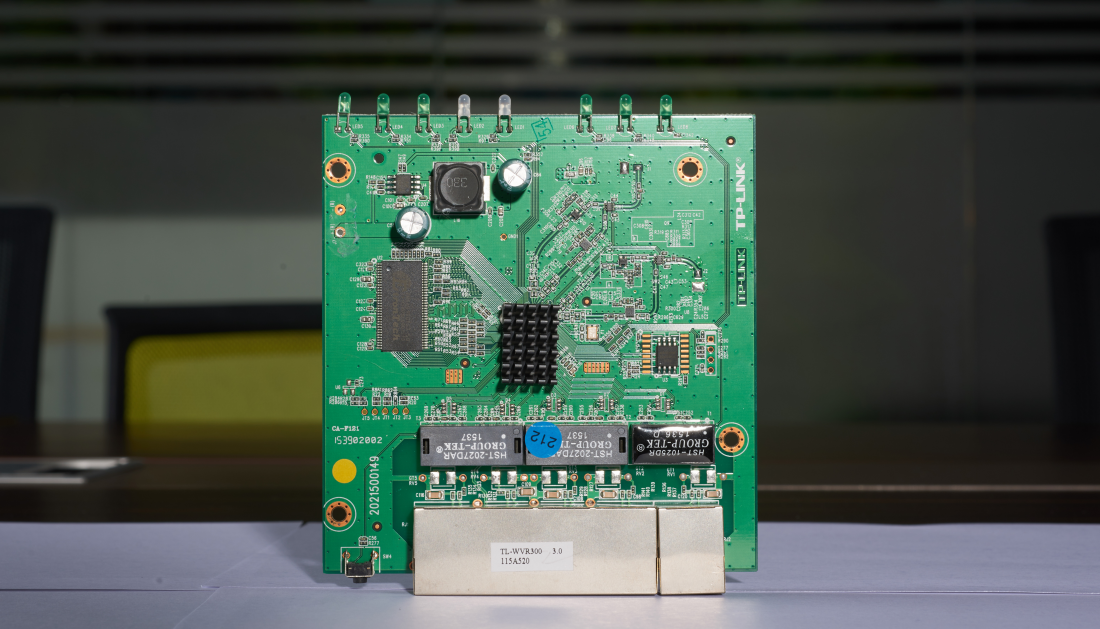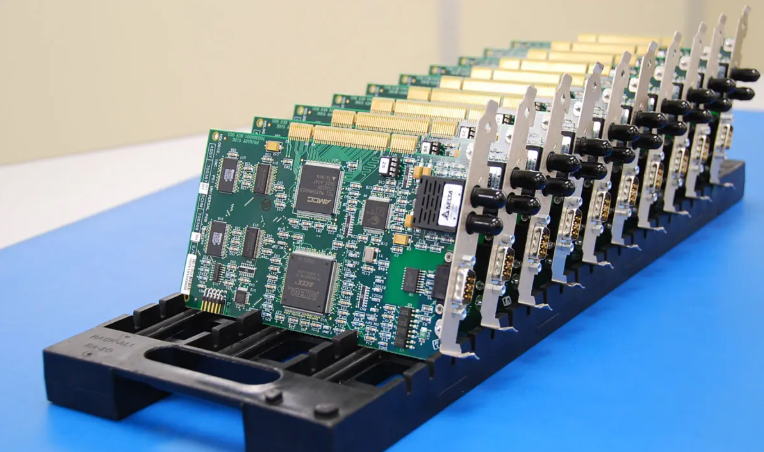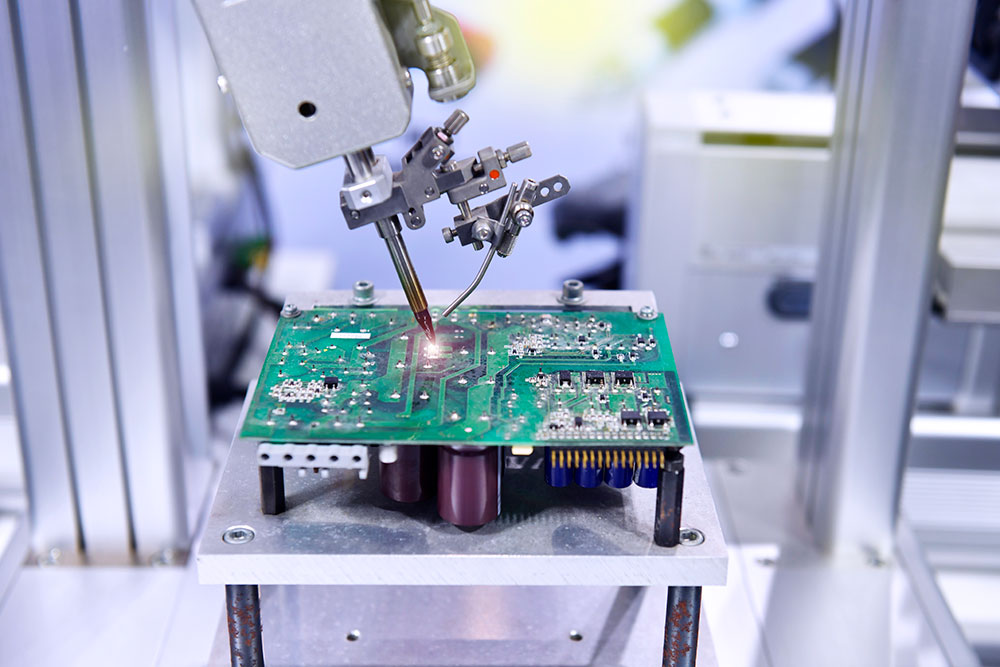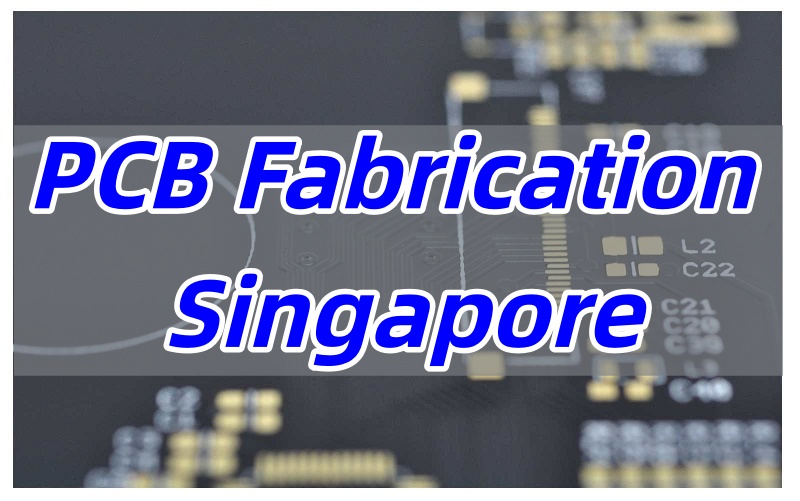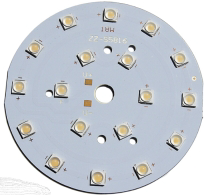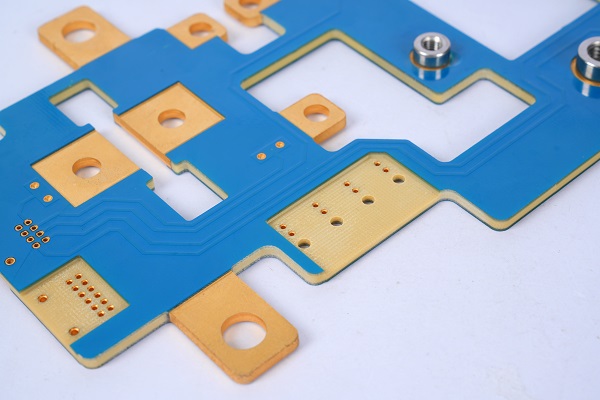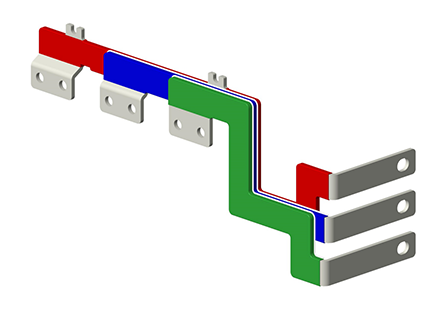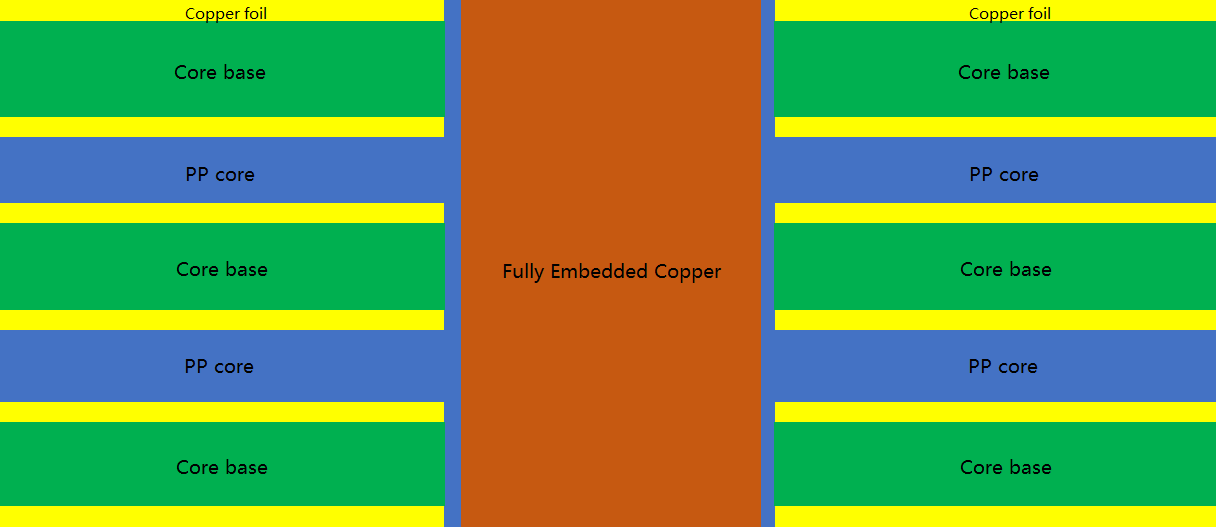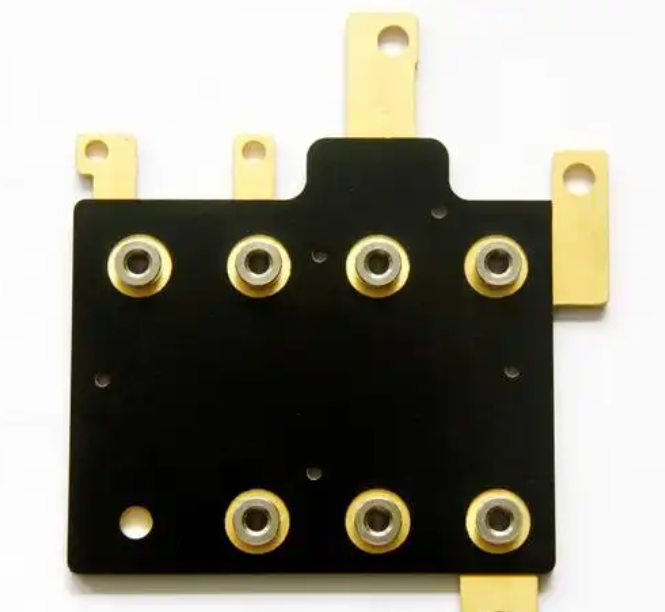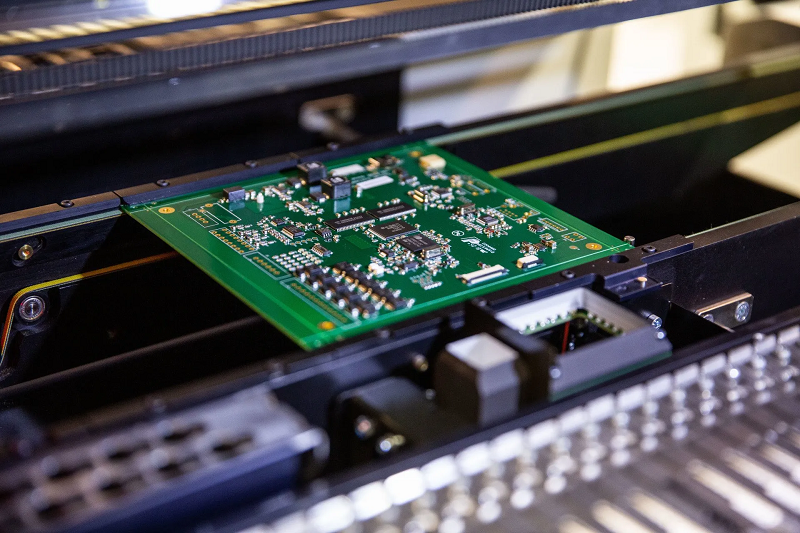โA โPCB layout makerโ is your gateway to turning circuit concepts into real, working boards. Every great electronic device starts with a well-planned PCB layout. Itโs the foundation that determines performance, reliability, and manufacturability. This article walks you through selecting the right tools, avoiding common design pitfalls, and partnering with a manufacturer who ensures your design not only works but excels.
Are you facing these common struggles?
- โSoftware Overwhelm: Too many PCB layout maker options, from free to professional, leaving you unsure which fits your project.
- โDesign-to-Production Gaps: Your file looks perfect on-screen but hits snags during manufacturing due to unclear specs or unsupported features.
- โCostly Revisions: Small errors in layout lead to multiple prototype rounds, eating into time and budget.
- โTool Limitations: Free PCB layout maker software often lacks advanced features needed for complex or high-density designs.
- โSupplier Miscommunication: Manufacturers struggle to interpret your design intent, resulting in delays or compromised quality.
At Best Technology, we bridge the gap between design and delivery. Hereโs how we tackle these issues head-on:
- โTool-Agnostic Support: Whether you use KiCad, Altium, or an online PCB layout maker, we accept all major file formats and optimize them for production.
- โDFM Integration: Our engineers pre-check your design for manufacturability, catching errors before they become costly.
- โRapid Prototyping: Streamlined processes turn your layout into a tangible PCB in days, not weeks.
- โAdvanced Capacity Support: From HDI to ceramic boards, we handle designs that free software canโt prepare for.
- โCollaborative Engineering: We work with you to refine layouts for signal integrity, thermal management, and yield.
Think of a PCB layout as the blueprint of a building. It dictates where components sit, how they connect, and how signals flow. A clean layout means better performance; a messy one invites noise, heat, and failure. As a specialized PCB and assembly provider, Best Technology offers end-to-end supportโfrom initial design review to box-build assembly. Do you have a project that need us to support? Just feel free to reach our team at sales@bestpcbs.com.
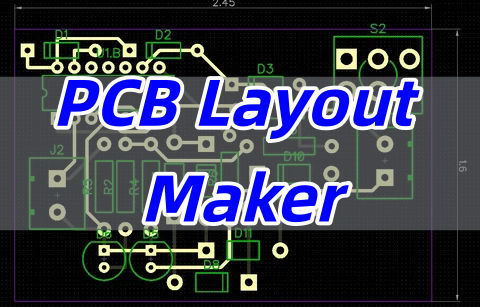
What Is a PCB Layout Maker?
A PCB layout maker is any softwareโfree, online, or professionalโthat lets you arrange components and route traces on a virtual board. Popular examples include:
- โKiCad: Open-source and powerful.
- โEasyEDA: Browser-based for quick edits.
- โAltium Designer: Industry favorite for complex projects.
These tools output Gerber or ODB++ files, which manufacturers use to produce physical boards. But a file alone isnโt enough. At Best Technology, we review your design for real-world constraintsโlike material choice and drill alignmentโso your creation is not just viable but optimal.
Common Free and Professional PCB Layout Makers
Choosing the right PCB layout maker depends on your projectโs needs. Hereโs a quick comparison:
- โKiCadโ โ Best free PCB design software for enthusiasts and pros alike. No cost, no hidden limits.
- โEasyEDAโ โ Perfect for beginners. Its online PCB layout maker interface simplifies learning.
- โAltium Designerโ โ Top-tier for high-speed or multi-layer boards. Steep learning curve but unmatched depth.
- โFusion 360โ โ Integrates PCB layout with 3D modeling, great for mechanical fits.
Weโve seen files from all these platforms. Our job is to ensure your designโwhether from a free PCB layout maker or a premium toolโtranslates flawlessly into production.
How to Select the Right PCB Layout Maker for Your Project?โ
Choosing a โPCB layout makerโ can feel like standing in front of an open toolbox. They all look useful, but grabbing the wrong one can make your job much harder. The key isn’t to find the “best” tool overall, but the best one for you.
A great way to start is by asking three fundamental questions that will immediately narrow down your options.
โ1. What is the technical complexity of my board?โโ
This is the most important factor. The needs of a hobbyist and a professional engineer are worlds apart.
- โSimple & Low-Cost Projects:โโ Are you creating a basic Arduino shield, a personal project, or a single-layer board for a simple circuit? For these, a โfree PCB layout makerโ like โKiCadโ or an online tool like โEasyEDAโ is a perfect starting point. They are more than capable of handling these tasks without the overhead of complex features.
- โMedium Complexity & Professional Work:โโ Is your design a 4 to 8-layer board with moderate component density, like a custom IoT device or an industrial controller? This is where tools like โFusion 360โ (which includes ECAD and MCAD) or subscription-based versions of professional software shine. They offer advanced routing options and better library management.
- โHigh Complexity & Advanced Applications:โโ Are you designing a high-speed 16-layer motherboard, an RF communication module, or a board with HDI (High-Density Interconnect) technology? For these, industry-standard tools like โAltium Designerโ or โCadence Allegroโ are necessary. Their powerful simulation engines for signal and power integrity are non-negotiable for getting the design right the first time.
โ2. What is my realistic budget, both now and later?โโ
Be honest about what you can spend, not just on the software license, but on the entire project.
- โZero Budget (Free & Open Source):โโ โKiCadโ is the standout champion here. It’s completely free, with no restrictions on board size or layers. It’s a powerful statement that you can do professional work without a professional price tag.
- โLow-Cost / Subscription Models:โโ โEasyEDAโ (free with premium features) and โFusion 360โ (with a free startup/hobbyist license) offer a great balance. They lower the barrier to entry while providing a path to more advanced features.
- โHigh Investment (Professional Licenses):โโ Software like โAltium Designerโ represents a significant investment (often thousands of dollars per year). However, for a company where design time is money, the efficiency, reliability, and advanced features can pay for themselves quickly by preventing costly respins.
โ3. How does my team need to collaborate?โโ
Are you working alone, with a remote team, or with mechanical engineers in the next office?
- โIndividual Use:โโ If you’re a solo inventor, any standalone software like KiCad or Altium will work. Your main concern is file compatibility with your manufacturer.
- โTeam-Based & Cloud-Collaborative:โโ For teams spread across different locations, cloud-based โPCB layout maker onlineโ platforms are a game-changer. โEasyEDAโ and โAltium 365โ allow multiple people to work on the same design simultaneously, with version control and real-time commenting, eliminating the nightmare of managing different file versions.
You’ve chosen your tool and perfected your layout. But here’s a pro tip: the final, and perhaps most crucial, step happens before you even generate your Gerber files. โTalk to your manufacturer as soon as you have a draft.โโ
Why? Because we see designs every day that look perfect on screen but contain hidden manufacturing challenges. At Best Technology, we offer a free โDesign for Manufacturability (DFM) checkโ at the early design stage.
When you involve us early, our engineers can provide proactive feedback on:
- โTrace Widths and Clearances:โโ Are they suitable for our advanced etching process, ensuring reliability?
- โDrill Sizes and Pad Sizes:โโ Are your holes drillable without causing reliability issues, especially in vias?
- โLayer Stack-up:โโ Is the material and thickness order optimal for signal integrity and cost-effectiveness?
- โSolder Mask and Silkscreen:โโ Is the text legible? Are there any mask slivers that could cause short circuits?
This collaborative approach transforms the โPCB layout makerโ from a solitary design tool into the first step of a seamless production pipeline. By letting us provide input on your โPCB layout design, we can often catch minor issues that would otherwise lead to a failed prototype, saving you time, money, and frustration. Itโs the smartest way to ensure your digital creation becomes a flawless physical product.
Turning Your PCB Layout into a Real Product
This is where vision meets reality. The journey has clear steps:
- โFile Submission: Send us your Gerbers, ODB++, or native design files.
- โEngineering Review: We analyze DFM (Design for Manufacturability) and suggest refinements.
- โFabrication: Using laser drills and automated optical inspection, we build your board layer by layer.
- โAssembly: Components are placed, soldered, and tested.
- โTesting & Shipping: Every board undergoes electrical and functional checks.
Our capabilities include HDI, ceramic substrates, and lead-free finishes. With Best Technology, your design transitions into a product backed by predictable performance and yield.
How to Make a Printed Circuit Board?
BEST Technology is a professional PCB manufacturer with extensive experience in producing high-quality printed circuit boards. We utilize advanced equipment and strict quality control processes to ensure every PCB meets our clients’ specifications.
1. Material Selection and Preparation
We begin with carefully selected materials based on your specific requirements:
- โBase Materials: FR-4 (various TG values), high-frequency materials (Rogers, Taconic), metal core substrates
- โCopper Foil: Range from 1/2OZ to 30OZ thickness options
- โPrepreg: Various types (1080, 2116, 7628) for interlayer bonding
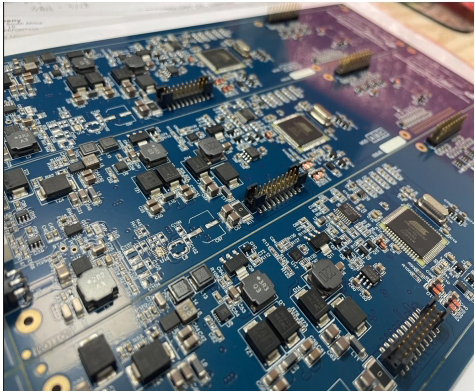
2. Inner Layer Processing
- โBoard Cutting: Precisely cut large panels to required working dimensions
- โInner Layer Circuitry: Dry film application, exposure, development, and etching
- โAOI Inspection: Automated optical inspection to ensure circuit quality
- โBrown Oxidation: Surface treatment to enhance bonding capability
3. Multi-layer Lamination
- โLayer Stack-up: Precise alignment of inner layers with prepreg
- โHot Pressing: High temperature (around 200ยฐC) and pressure application
- โCooling Process: Controlled cooling to prevent warping and twisting
4. Drilling Process
- โMechanical Drilling: Capable of drilling holes from 0.15mm to 6.5mm diameter
- โLaser Drilling: For micro-vias as small as 0.07mm
- โAspect Ratio: Up to 25:1 for through-holes
- โSpecial Capabilities: Back drilling, controlled depth drilling, and slot machining
5. Plating and Metallization
- โElectroless Copper Deposition: Creates conductive layer in hole walls (1-3ฮผm)
- โPanel Plating: Builds up copper thickness using advanced chemistry
- โPattern Plating: Selective copper and tin plating for circuit formation
6. Outer Layer Circuit Formation
- โDry Film Application: High-precision pattern transfer
- โExposure and Development: Using LDI technology capable of 2.5/2.5mil line width/spacing
- โEtching: Precise copper removal to create circuit patterns
7. Solder Mask Application
- โInk Types: Various colors available (green, black, blue, red, white, yellow, purple)
- โApplication Methods: Both screen printing and coating processes
- โPrecision: Minimum solder mask bridge of 3-4mil depending on copper thickness
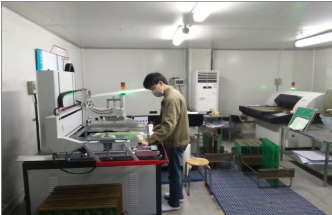
8. Surface Finishing
We offer comprehensive surface treatment options:
- โLead-free HASL: For general applications
- โENIG: Excellent for fine-pitch components
- โImmersion Silver/Tin: Cost-effective alternatives
- โGold Finger Plating: For edge connectors
- โENEPIG: Advanced surface finish for demanding applications
9. Final Processing
- โLegend Printing: Screen printing or inkjet printing of component markings
- โProfile Routing: CNC machining for precise board outlines
- โV-scoring: For panel separation with various angle options
- โElectrical Testing: Flying probe or test fixture methods
BEST Technology’s Manufacturing Capabilities
Material Expertise
- โStandard FR-4: TG130-TG180 options
- โHigh-Frequency Materials: Rogers, Taconic, Arlon series
- โHigh-Speed Materials: Various loss grades for different frequency requirements
- โMetal Core PCBs: Aluminum and copper substrates for thermal management
Technical Specifications
- โLayer Count: 1-50 layers standard, up to 100 layers with review
- โBoard Thickness: 0.4mm to 6mm standard, 0.15mm to 10mm extended range
- โCopper Thickness: 0.5OZ to 28OZ (outer), 0.5OZ to 20OZ (inner)
- โMinimum Line Width/Spacing: 3/3mil for standard applications
Quality Assurance
- โIPC Standards: Compliance with IPC Class 2 and Class 3 requirements
- โTesting Capabilities: Advanced equipment for comprehensive quality verification
- โProcess Control: Strict monitoring at every manufacturing step
Competitive Advantages
Technical Excellence
- โAdvanced Equipment: State-of-the-art manufacturing and inspection tools
- โEngineering Expertise: Experienced team capable of handling complex designs
- โQuality Focus: Commitment to delivering reliable, high-performance PCBs
Comprehensive Service
- โDesign Support: Assistance with stack-up design and DFM optimization
- โMaterial Guidance: Expert recommendations based on application requirements
- โRapid Prototyping: Quick turnaround for design verification
Quality Commitment
- โStringent Inspection: Multiple checkpoints throughout manufacturing
- โPerformance Verification: Electrical testing and impedance control
- โReliability Assurance: Materials and processes selected for long-term performance
At BEST Technology, we combine advanced manufacturing capabilities with rigorous quality control to deliver PCBs that meet the most demanding specifications. Our comprehensive approach ensures that every board we produce meets the highest standards of quality and reliability.
Best Practices and PCB Layout Tips from PCB Experts at BEST Technologyโ
After finalizing your schematic, the PCB layout stage is where theoretical design transforms into a physically viable product. A well-executed layout is paramount to the functionality, reliability, and manufacturability of your board. At BEST Technology, our engineers have identified key areas where strategic layout decisions prevent common pitfalls and significantly enhance performance.
โ1. Mastering Component Placementโ
Think of component placement as arranging the rooms in a house for optimal flow. Proper placement sets the stage for efficient routing and optimal performance.
- โGroup by Function: Place related components (e.g., a microcontroller and its decoupling capacitors and crystal) close together. This minimizes trace lengths and reduces noise.
- โConsider Signal Flow: Arrange components to facilitate a logical, direct signal path from input to output, avoiding unnecessary backtracking or crossing of sensitive signals.
- โPlan for Heat Dissipation: Identify high-power components early and position them to allow for adequate cooling. Avoid clustering heat-generating parts.
- โKeep Connectors Accessible: Place connectors, especially those for user interfaces or external cables, along the board edges for easy access.
โ2. Power Distribution Network (PDN) Designโ
A robust PDN is the backbone of your board, preventing erratic behavior and ensuring all components receive clean, stable power.
- โUse Power Planes Where Possible: Solid power planes offer low-impedance power distribution, which is superior to routing power with traces.
- โImplement a Strategic Decoupling Scheme: Place small-value decoupling capacitors (e.g., 100nF) as close as possible to the power pins of each IC. Use larger bulk capacitors (e.g., 10uF) near the board’s power entry point to handle slower current demands.
- โMind Your Return Paths: Current must have a clear, low-impedance path back to its source. Avoid splitting ground planes underneath high-speed signal traces, as this can create large loop areas and act as an antenna.
โ3. Signal Integrity Fundamentalsโ
How you route your traces directly impacts signal quality, especially in high-speed designs.
- โControl Impedance: For high-speed signals (like USB, HDMI, DDR), the trace must have a consistent characteristic impedance (e.g., 50ฮฉ single-ended, 100ฮฉ differential). This is controlled by trace width, copper thickness, and the distance to the reference plane. Our team can provide you with the correct stack-up and trace width calculations.
- โRoute Differential Pairs Correctly: The two traces in a differential pair must be of equal length and closely spaced to maintain noise immunity. Route them together from start to finish.
- โMinimize Via Use in High-Speed Paths: Each via introduces a small discontinuity in impedance. For critical signals, minimize the number of vias used.
โ4. The Critical Role of Groundingโ
A poor grounding strategy is a common source of noise and interference.
- โUse a Continuous Ground Plane: A solid ground plane on an adjacent layer provides a stable reference for signals and a low-impedance return path.
- โSeparate Analog and Digital Grounds: If your board has both analog and digital sections, partition the ground plane to prevent noisy digital return currents from corrupting sensitive analog signals. Connect these grounds at a single point, typically under the ADC or at the power supply.
โ5. Design for Manufacturing (DFM)โ
A perfect design in software is useless if it can’t be reliably manufactured. Adhering to DFM rules saves time and cost.
- โRespect Clearance Rules: Maintain adequate spacing between traces, pads, and copper pours. Our standard capability is 3/3mil (line/space), but designing with larger clearances where possible improves yield.
- โThermal Relief for Pads: Use thermal relief connections (spoked connections) for pads connected to large copper pours or power planes. This prevents heat from sinking away during soldering, which can lead to cold solder joints.
- โSolder Mask and Silkscreen: Ensure solder mask dams between fine-pitch component pins are sufficient to prevent bridging. Keep silkscreen legible and away from solderable areas.
Even with the best practices, simulation is key to predicting real-world behavior. Before you commit to a prototype, our engineering team can provide an added layer of confidence through advanced analysis:
- โSignal Integrity Simulation: We analyze your high-speed paths for reflections, crosstalk, and timing issues.
- โPower Integrity Simulation: We verify that your PDN will deliver stable voltage to all components, even under peak current demands.
- โThermal Analysis: We can identify potential hot spots and suggest layout improvements for better heat dissipation.
By partnering with BEST Technology from the layout stage, you leverage years of manufacturing expertise. We help you create a design that not only works on paper but is also optimized for performance, reliability, and efficient production.
It is clear that a โPCB layout makerโ gives you the power to create. But the right partner simplifies the path from prototype to production.โ From design to delivery, Best Technology ensures your ideas become robust, market-ready products.
We offer PCB layout design support, prototyping in as little as 24 hours, fabrication and full turnkey assembly. Pls feel free to send your files to sales@bestpcbs.com for a fast, free quote.
FAQs
Q1: What is the difference between IPC Class 2 and IPC Class 3 standards for PCBs?โโ
- โA:โโ IPC Class 2 is designed for standard consumer electronics, where high reliability is not critical and a longer product life is expected. IPC Class 3 is for high-reliability or harsh-environment applications, such as industrial, automotive, aerospace, and medical equipment, where continuous performance and extended life are essential. The difference lies in stricter acceptance criteria for Class 3, requiring more precise manufacturing control over parameters like drilling accuracy, copper plating thickness in holes, and solder mask thickness.
โQ2: Are you capable of manufacturing PCBs to the IPC Class 3 standard, and is the price difference significant?โโ
- โA:โโ Yes, we are fully capable of producing PCBs that meet the stringent IPC Class 3 standard. The price premium for Class 3 is typically โ10%-15% higherโ than for Class 2, reflecting the enhanced process controls, materials, and inspection required.
โQ3: Can you assist with the stack-up design for our PCB?โโ
- โA:โโ Absolutely. We can design the PCB stack-up according to your requirements. Please provide us with the necessary details, such as the number of layers, copper weight (oz), and the desired final board thickness.
โQ4: What payment methods do you accept, and are credit terms (e.g., monthly credit) available?โโ
- โA:โโ We accept payments via โPayPal, T/T (Bank Wire Transfer), and Western Union. For new customers, we require 100% payment in advance. Upon establishing a stable cooperation history and reaching a certain order volume, we can discuss other payment arrangements, such as net monthly terms.



